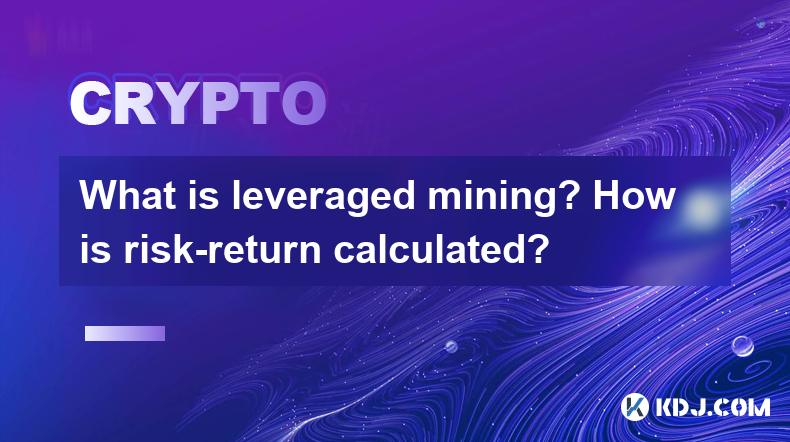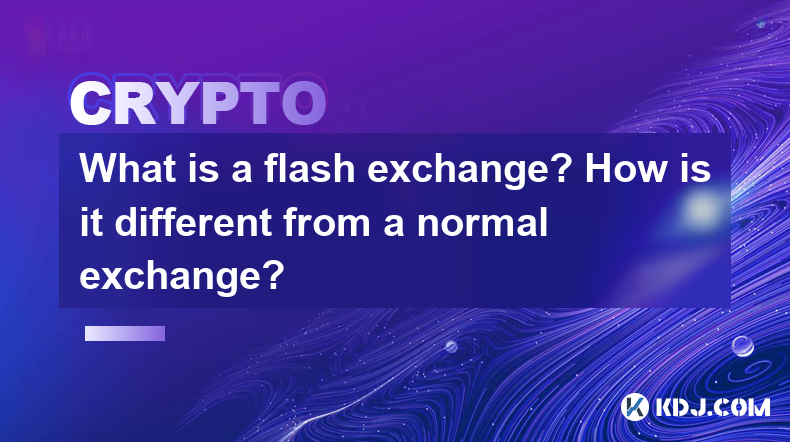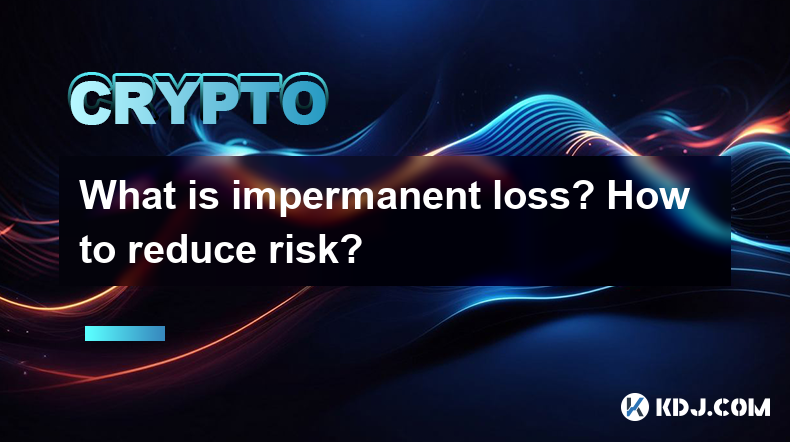-
 Bitcoin
Bitcoin $84,475.2276
-1.11% -
 Ethereum
Ethereum $1,577.9509
-1.75% -
 Tether USDt
Tether USDt $1.0000
0.01% -
 XRP
XRP $2.0557
-1.39% -
 BNB
BNB $589.1289
-0.05% -
 Solana
Solana $137.1836
-1.85% -
 USDC
USDC $1.0000
0.02% -
 TRON
TRON $0.2453
1.27% -
 Dogecoin
Dogecoin $0.1541
-2.57% -
 Cardano
Cardano $0.6153
-1.47% -
 Chainlink
Chainlink $13.1555
2.91% -
 UNUS SED LEO
UNUS SED LEO $9.3294
0.22% -
 Avalanche
Avalanche $19.4997
-1.28% -
 Toncoin
Toncoin $2.9930
0.44% -
 Stellar
Stellar $0.2419
-1.44% -
 Shiba Inu
Shiba Inu $0.0...01236
1.47% -
 Hedera
Hedera $0.1637
-1.21% -
 Sui
Sui $2.1026
-2.09% -
 Bitcoin Cash
Bitcoin Cash $333.9424
-1.13% -
 Polkadot
Polkadot $3.8670
3.71% -
 Hyperliquid
Hyperliquid $17.3073
-4.38% -
 Litecoin
Litecoin $76.2492
0.30% -
 Dai
Dai $1.0000
0.02% -
 Bitget Token
Bitget Token $4.3921
-3.74% -
 Ethena USDe
Ethena USDe $0.9993
0.02% -
 Pi
Pi $0.6235
-4.49% -
 Monero
Monero $215.7578
1.51% -
 Uniswap
Uniswap $5.2205
-0.73% -
 Pepe
Pepe $0.0...07454
2.77% -
 Aptos
Aptos $4.9948
3.69%
How does DeFi work?
Decentralized finance (DeFi), an emerging financial system built on the blockchain, empowers individuals with unprecedented access to financial services by eliminating the need for traditional intermediaries.
Oct 05, 2024 at 08:35 am

How DeFi Works
Decentralized finance (DeFi) is a rapidly growing financial ecosystem that operates on the blockchain. Unlike traditional finance, DeFi does not rely on central authorities like banks or governments. Instead, it uses smart contracts, which are self-executing agreements that run on the blockchain.
How does DeFi work?
- Create a wallet: The first step to using DeFi is to create a cryptocurrency wallet. This wallet will store your digital assets and allow you to interact with DeFi applications.
- Fund your wallet: Once you have created a wallet, you need to fund it with cryptocurrency. You can purchase cryptocurrency from exchanges like Coinbase or Binance, or you can transfer it from another wallet.
- Connect to a DeFi application: Once your wallet is funded, you can connect it to a DeFi application. There are many different DeFi applications available, each with its own set of features.
- Use the DeFi application: Once you have connected to a DeFi application, you can use its features to manage your digital assets. For example, you can lend or borrow cryptocurrency, participate in liquidity pools, or trade cryptocurrencies.
- Withdraw your funds: When you are finished using a DeFi application, you can withdraw your funds to your wallet.
Benefits of DeFi
- Decentralized: DeFi does not rely on central authorities, which makes it more resistant to censorship and manipulation.
- Transparent: All transactions on the blockchain are public, which makes DeFi more transparent than traditional finance.
- Accessible: DeFi is accessible to anyone with an internet connection.
- Global: DeFi can be used by people anywhere in the world.
Risks of DeFi
- Smart contract risk: Smart contracts are complex programs, and there is always the risk of a bug or vulnerability that could be exploited.
- Volatility: The price of cryptocurrency can be volatile, which could result in losses for DeFi users.
- Security risks: DeFi applications are often targets for hackers, so it is important to take steps to protect your funds.
Overall, DeFi is a new and exciting financial ecosystem with the potential to revolutionize the way we interact with money. However, it is important to be aware of the risks involved before using DeFi applications.
Disclaimer:info@kdj.com
The information provided is not trading advice. kdj.com does not assume any responsibility for any investments made based on the information provided in this article. Cryptocurrencies are highly volatile and it is highly recommended that you invest with caution after thorough research!
If you believe that the content used on this website infringes your copyright, please contact us immediately (info@kdj.com) and we will delete it promptly.
- XRP Gains Traction as a Payment Option in Latin America, New Statistics Show
- 2025-04-20 23:25:15
- PancakeSwap's CAKE Token Is Up Over 30% This Month
- 2025-04-20 23:25:15
- Metaplanet's Bitcoin Strategy Has Shook Up the Market by Adding Another 150 BTC to Its Treasury
- 2025-04-20 23:25:13
- Render (RNDR) price prediction: Will the altcoin climb higher from the $3 demand zone?
- 2025-04-20 23:25:13
- XRP and bitcoin (BTC) price action resembles a compressed spring
- 2025-04-20 23:15:14
- Retail Investors Have Been Unwinding Their Crypto Positions
- 2025-04-20 23:15:14
Related knowledge

What is impermanent loss insurance? What are the solutions?
Apr 12,2025 at 01:14am
What is Impermanent Loss Insurance? What are the Solutions? Impermanent loss is a significant concern for liquidity providers in decentralized finance (DeFi) platforms. It occurs when the price of tokens in a liquidity pool changes compared to when they were deposited, leading to a potential loss if the provider decides to withdraw their liquidity. To m...

What are algorithmic stablecoins? How do they maintain anchoring?
Apr 12,2025 at 11:35am
Algorithmic stablecoins represent a fascinating and innovative segment within the cryptocurrency ecosystem. These digital assets are designed to maintain a stable value, typically pegged to a fiat currency like the US dollar, through the use of algorithms rather than traditional collateral. This approach distinguishes them from other types of stablecoin...

What is leveraged mining? How is risk-return calculated?
Apr 11,2025 at 04:07pm
What is Leveraged Mining? How is Risk-Return Calculated? Leveraged mining is a strategy used in the cryptocurrency space where miners borrow funds to increase their mining capacity and potential returns. This approach can amplify both profits and losses, making it a high-risk, high-reward endeavor. Understanding how to calculate the risk and return asso...

What is an aggregator? How does 1inch optimize transaction paths?
Apr 12,2025 at 05:00pm
An aggregator in the cryptocurrency space is a tool that compiles and compares data from multiple decentralized exchanges (DEXs) to find the best possible trading routes and prices for users. Aggregators are essential for traders looking to optimize their transactions, as they can automatically search through various liquidity sources to ensure the most...

What is a flash exchange? How is it different from a normal exchange?
Apr 16,2025 at 03:43pm
A flash exchange, also known as a flash swap, is a relatively new concept within the cryptocurrency space that has gained significant attention due to its innovative approach to trading. Unlike traditional exchanges, flash exchanges leverage the power of decentralized finance (DeFi) protocols to enable instant, collateral-free trades. In this article, w...

What is impermanent loss? How to reduce risk?
Apr 16,2025 at 11:14pm
What is Impermanent Loss? How to Reduce Risk? Impermanent loss is a term that frequently surfaces in the world of decentralized finance (DeFi), particularly when discussing liquidity provision on automated market makers (AMMs) like Uniswap or SushiSwap. Understanding this concept is crucial for anyone looking to engage in liquidity provision, as it dire...

What is impermanent loss insurance? What are the solutions?
Apr 12,2025 at 01:14am
What is Impermanent Loss Insurance? What are the Solutions? Impermanent loss is a significant concern for liquidity providers in decentralized finance (DeFi) platforms. It occurs when the price of tokens in a liquidity pool changes compared to when they were deposited, leading to a potential loss if the provider decides to withdraw their liquidity. To m...

What are algorithmic stablecoins? How do they maintain anchoring?
Apr 12,2025 at 11:35am
Algorithmic stablecoins represent a fascinating and innovative segment within the cryptocurrency ecosystem. These digital assets are designed to maintain a stable value, typically pegged to a fiat currency like the US dollar, through the use of algorithms rather than traditional collateral. This approach distinguishes them from other types of stablecoin...

What is leveraged mining? How is risk-return calculated?
Apr 11,2025 at 04:07pm
What is Leveraged Mining? How is Risk-Return Calculated? Leveraged mining is a strategy used in the cryptocurrency space where miners borrow funds to increase their mining capacity and potential returns. This approach can amplify both profits and losses, making it a high-risk, high-reward endeavor. Understanding how to calculate the risk and return asso...

What is an aggregator? How does 1inch optimize transaction paths?
Apr 12,2025 at 05:00pm
An aggregator in the cryptocurrency space is a tool that compiles and compares data from multiple decentralized exchanges (DEXs) to find the best possible trading routes and prices for users. Aggregators are essential for traders looking to optimize their transactions, as they can automatically search through various liquidity sources to ensure the most...

What is a flash exchange? How is it different from a normal exchange?
Apr 16,2025 at 03:43pm
A flash exchange, also known as a flash swap, is a relatively new concept within the cryptocurrency space that has gained significant attention due to its innovative approach to trading. Unlike traditional exchanges, flash exchanges leverage the power of decentralized finance (DeFi) protocols to enable instant, collateral-free trades. In this article, w...

What is impermanent loss? How to reduce risk?
Apr 16,2025 at 11:14pm
What is Impermanent Loss? How to Reduce Risk? Impermanent loss is a term that frequently surfaces in the world of decentralized finance (DeFi), particularly when discussing liquidity provision on automated market makers (AMMs) like Uniswap or SushiSwap. Understanding this concept is crucial for anyone looking to engage in liquidity provision, as it dire...
See all articles























































































